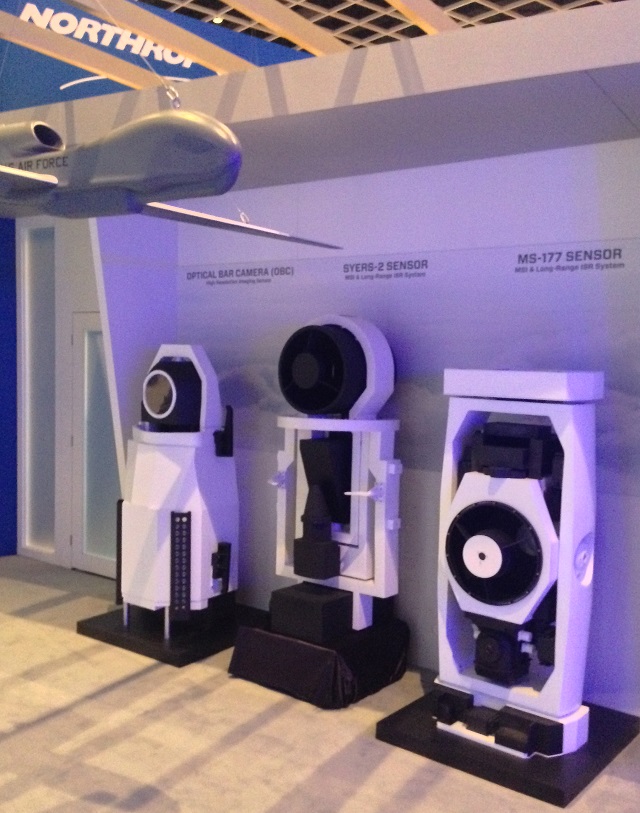The Air Force Association’s annual gathering in Orlando, Florida has convened again, and the turnout this week reflects an ambitious US Air Force that is reaching for the future while also searching for new and inventive ways to boost the destructive power of its legacy aircraft.
This year’s event is themed “global precision attack”, and heavyweights from US Air Combat Command and Global Strike Command have turned out to highlight pressing objectives in a changing world where peer-on-peer conflicts with states like Russia, China, Iran and North Korea are less inconceivable than in years past. US air power is also leading strikes terrorist organisations in Iraq, Syria and now Libya.
The global-strike theme reflects two top priorities of the air force: the introduction of Northrop Grumman’s Long-Range Strike Bomber or “B-3” and widespread investments in hypersonic missiles for precision attacks at speed not interceptable by today’s air defence technology.
The opening reception on 24 February inside the main industry display area offered an insight into things to come at this year’s forum, and Northrop Grumman’s B-2 stealth bomber-themed napkins said much without the company saying anything at all.
Northrop has many posters and a model of the B-2 “Spirit” that it designed and built the 1980s and 1990s at the Air Warfare Symposium. The RQ-4 Global Hawk manufacturer is also promoting recent flight tests with the Senior Year Electro-optical Reconnaissance System (SYERS) multispectral sensor, which is normally flown on its unmanned platform’s top competitor, the Lockheed Martin U-2. Northrop also has mockups of the MS-177 and Optical Bar Camera sensors at its booth.

James Drew/Flight International
Lockheed hits back in a symposium advertisement, saying the current U-2S manufactured in the 1980s is achieving mission success rates of 97% and will “remain the most effective [intelligence, surveillance and reconnaissance] solution beyond 2045”, despite the air force’s desire to retire the veteran platform in 2019. This comes as the company's Skunk Works division promotes its "UQ-2" or "RQ-X" concept as a follow-on.
The US Air Force Research Laboratory is looking for "major command" sponsors for its top technological innovations, including the computer-killing “CHAMP” high-power microwave energy weapon that was tested aboard a conventional air-launched cruise missile (CALCM) from a Boeing B-52 bomber in 2012. A spokeswoman for the group tells Flightglobal that CHAMP is capable of up to 100 shots per sortie and is very predictable in the way it shoots bursts of energy at electronic targets. It’s a non-lethal weapon that is very different from indiscriminate electromagnetic pulse effects normally associated with high-altitude nuclear explosions, she says, and is already at a decent technological maturity level, having been tested in an operational-type environment.
The laboratory is also pursuing more powerful scramjet engines that will someday power a high-speed surveillance drone that could takeoff and land on a runway. Another AFRL spokesman says near-term efforts focus on strike missiles, but eventually larger scramjet engines derived from the Boeing X-51 WaveRider will power new air vehicles. AFRL says it is “currently developing and testing larger engines for reusable ISR and strike systems by 2030”.

AFRL's new hypersonic "penetrating, persistent ISR and strike" concept
James Drew/Flight International
Nearer-term capabilities include air-breathing and boost-glide hypersonic weapon concepts being matured under a high-speed strike weapon (HSSW) programme. Aerojet Rocketdyne and Lockheed both have hypersonic weapon models on display.
Aerojet also has on display a ramjet-powered missile that it developed several years ago. It's also promoting two low-collateral-damage general purpose bombs – the carbon fibre-bound BLU-129 warhead, developed as a quick-reaction capability for the Iraq and Afghanistan campaigns, and a similar “penetrator” bomb sponsored by AFRL but not previously displayed.
General Atomics Aeronautical Systems is again showing off its stealthy “Avenger” remotely piloted aircraft (RPA) known as the “Predator C”, which is flown today by a classified government customer and is being pitched to the air force. Notably, air force MQ-9 Reaper procurement ends in fiscal year 2017 with funding for the final 24 of 347 aircraft.
General Atomics is also displaying a Reaper carrying four AGM-114 Hellfire missiles under each wing, double today’s capacity. One industry bomb rack expert says the Reaper normally carries four Hellfire missiles per sortie and the four-stack configuration seen at the symposium is similar to the Boeing AH-64 Apache helicopter gunship.
European missile maker MBDA is touting its Brimstone missile for the MQ-9 and other platforms, as well as its Meteor beyond-visual-range air-to-air missile as an alternative to the Raytheon AIM-120 AMRAAM.

Lockheed Martin
Regarding the air force’s $9 billion T-X advanced training jet competition, Lockheed has its T-50A offer that it developed with Korea Aerospace Industries on show, and Raytheon has a model of the Italian M-346 Master-based T-100 proposal it announced last week. Separately, Top Aces and Draken International are duking it out to supply contractor aggressor aircraft to the air force for high-end combat training.
Boeing, Northrop and Lockheed each have their business jet-based “JSTARS” platforms on display as that competition heats up. Boeing is offering a 737-based radar-carrying surveillance and battle management platform while Northrop and Lockheed’s proposals are based on Gulfstream and Bombardier business jets, respectively.
Source: FlightGlobal.com
















